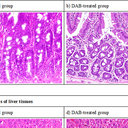Anti-inflammatory effects of supercritical carbon dioxide extract and its isolated carnosic acid from Rosmarinus officinalis leaves.
Ключови думи
Резюме
Rosemary (Rosmarinus officinalis) leaves possess a variety of bioactivities. Previous studies have shown that the extract of rosemary leaves from supercritical fluid extraction inhibits the expression of inflammatory mediators with apparent dose-dependent responses. In this study, three different extraction conditions (5000 psi at 40, 60, and 80 °C) of supercritical carbon dioxide (SC-CO(2)) toward the extraction of antioxidants from rosemary were investigated. Furthermore, simultaneous comparison of the anti-inflammatory properties between rosemary extract prepared from SC-CO(2) under optimal conditions (5,000 psi and 80 °C) and its purified carnosic acid (CA) using lipopolysaccharide (LPS)-treated murine RAW 264.7 macrophage cells was also presented. Results showed that the yield of 3.92% and total phenolics of 213.5 mg/g extract obtained from the most effective extraction conditions showed a high inhibitory effect on lipid peroxidation (IC(50) 33.4 μg/mL). Both the SC-CO(2) extract and CA markedly suppressed the LPS-induced production of nitric oxide (NO) and tumor necrosis factor-α (TNF-α), as well as the expression of inducible nitric oxide synthase (iNOS) and cyclooxygenase-2 (COX-2), phosphorylated inhibitor-kappaB (P-IκB), and nuclear factor-kappaB (NF-κB)/p65 in a dose-dependent manner. The five major compounds of verbenone, cirsimaritin, salvigenin, carnosol, and CA existing in the SC-CO(2) extract were isolated by semipreparative HPLC and identified by HPLC-MS/MS analysis. CA was the most abundant recorded compound and the most important photochemical with an anti-inflammatory effect with an IC(50) of 22.5 μM or 7.47 μg/mL presented to the best inhibitory activity on NO production better than that of the 14.50 μg/mL dosage prepared from the SC-CO(2) extract. Nevertheless, the effective inhibition of LPS-induced NF-κB signaling in RAW 264.7 cells from the SC-CO(2) extract extends the potential application of nutraceutical formulation for the prevention of inflammatory diseases.


